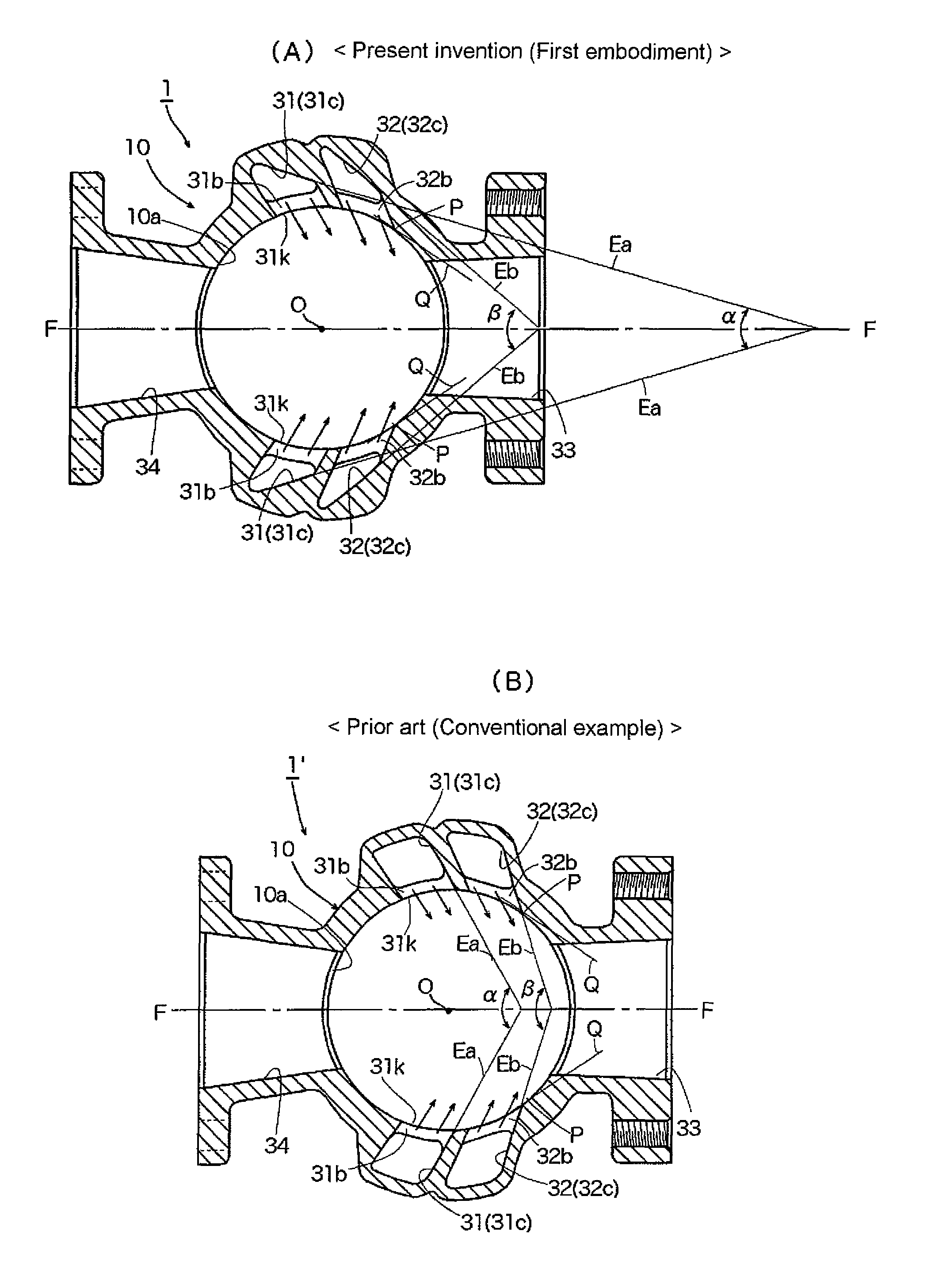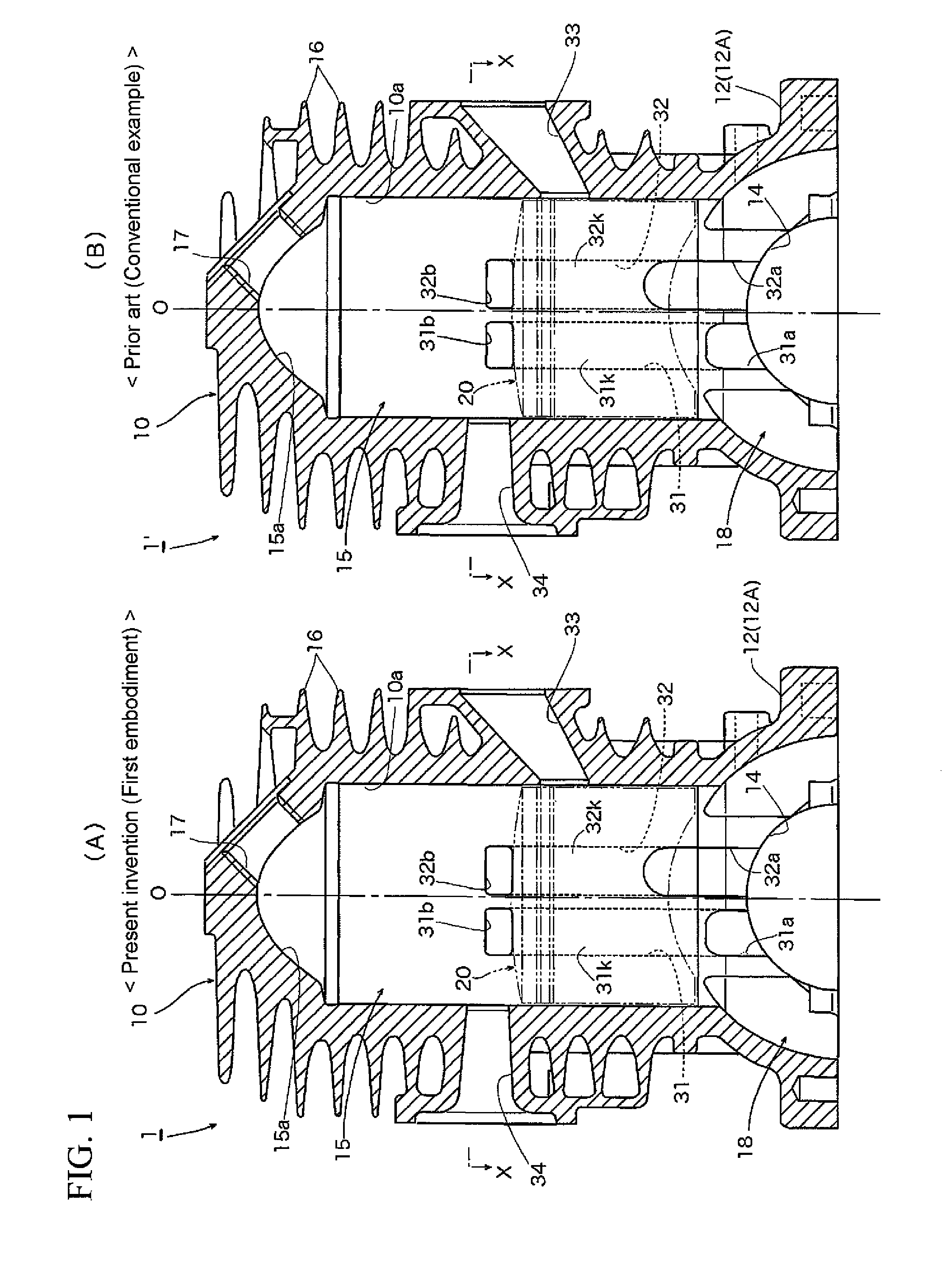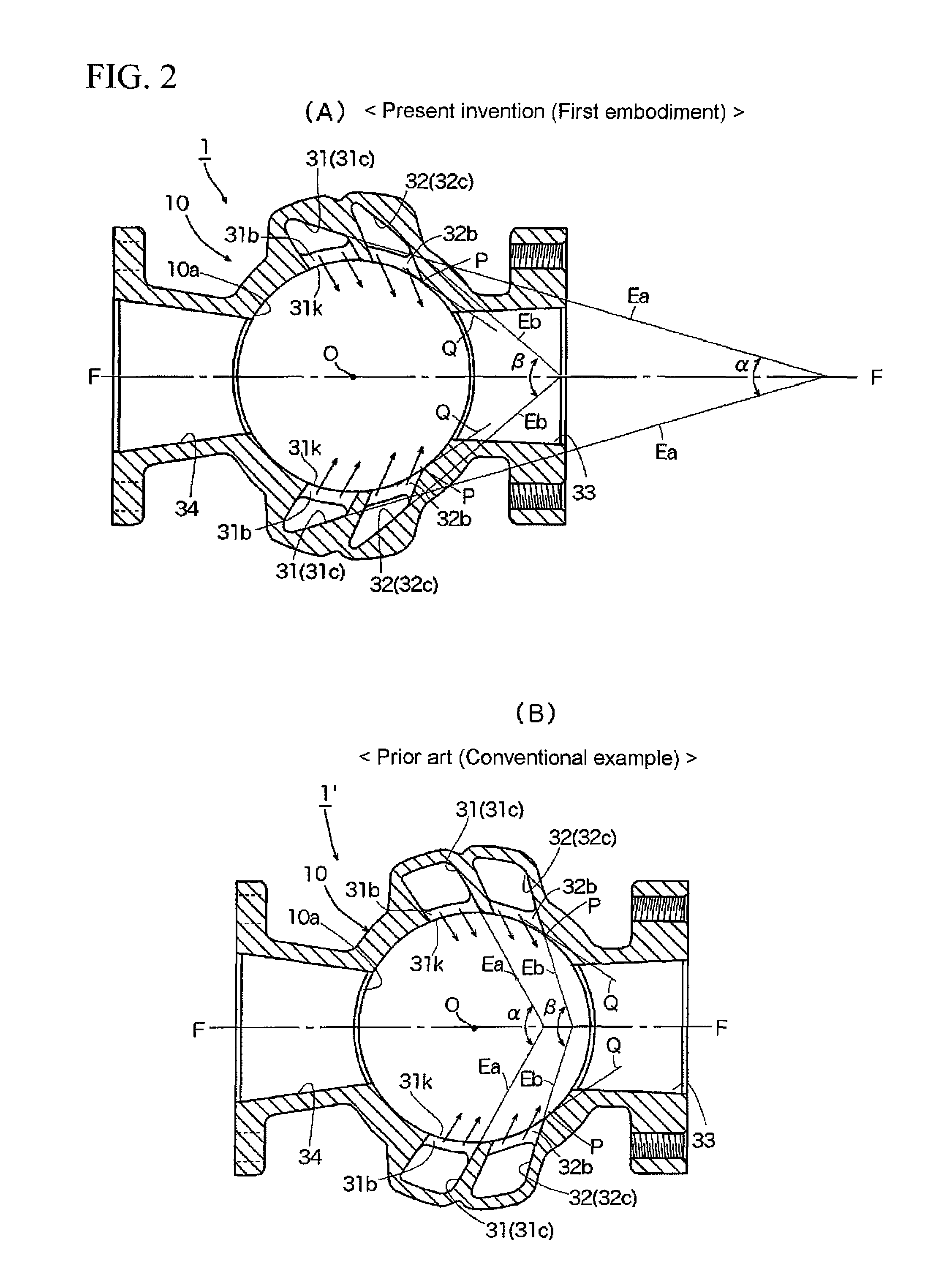Two-stroke internal combustion engine
a two-stroke, internal combustion engine technology, applied in combustion engines, cylinders, pipes, etc., can solve the problems of reducing affecting the combustion efficiency of the engine, and the cylinders are difficult to mold, so as to improve the combustion efficiency, and reduce the passage sectional area
- Summary
- Abstract
- Description
- Claims
- Application Information
AI Technical Summary
Benefits of technology
Problems solved by technology
Method used
Image
Examples
Embodiment Construction
[0050]Embodiments of the present invention (first and second embodiments) are described below with reference to the drawings.
[0051]FIG. 1(A) is a vertical sectional view of an embodiment (first embodiment) of a reverse scavenged two-stroke internal combustion engine according to the present invention, and FIG. 1(B) is a vertical sectional view of a conventional example of a reverse scavenged two-stroke internal combustion engine. FIG. 2(A) is a sectional view taken along and as viewed in the direction of arrows X-X in FIG. 1(A), and FIG. 2(B) is a sectional view taken along and as viewed in the direction of arrows X-X in FIG. 1(B). FIG. 3(A) is a base view of the main portion of the engine shown in FIG. 1(A), and FIG. 3(B) is a base view of the main portion of the engine shown in FIG. 1(B). Line O-O in FIGS. 1(A) and 1(B) illustrates the axis of cylinder 10, defined through the center O of cylinder 10 illustrated in FIGS. 2(A)-2(B) and 3(A)-3(B). With respect to the engines of the f...
PUM
 Login to View More
Login to View More Abstract
Description
Claims
Application Information
 Login to View More
Login to View More - R&D
- Intellectual Property
- Life Sciences
- Materials
- Tech Scout
- Unparalleled Data Quality
- Higher Quality Content
- 60% Fewer Hallucinations
Browse by: Latest US Patents, China's latest patents, Technical Efficacy Thesaurus, Application Domain, Technology Topic, Popular Technical Reports.
© 2025 PatSnap. All rights reserved.Legal|Privacy policy|Modern Slavery Act Transparency Statement|Sitemap|About US| Contact US: help@patsnap.com



